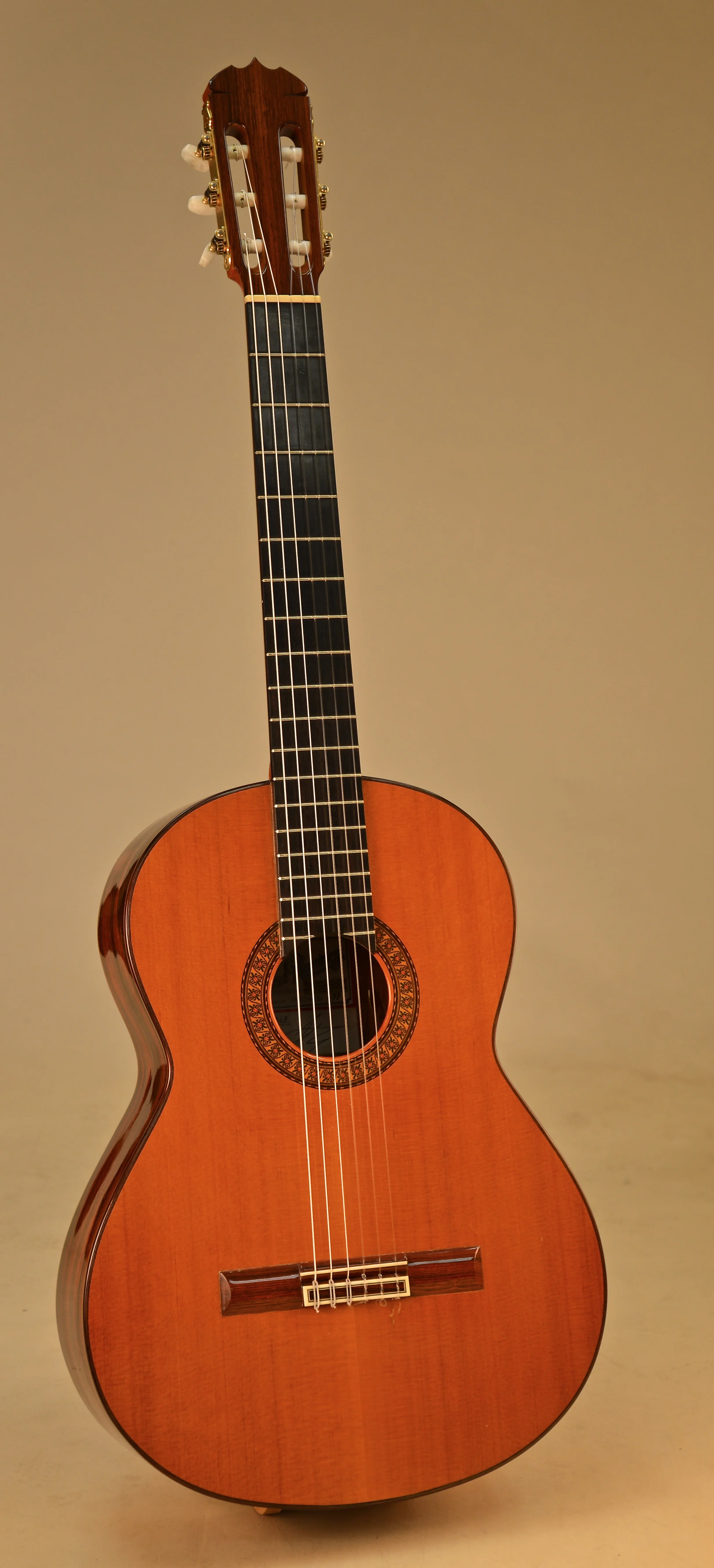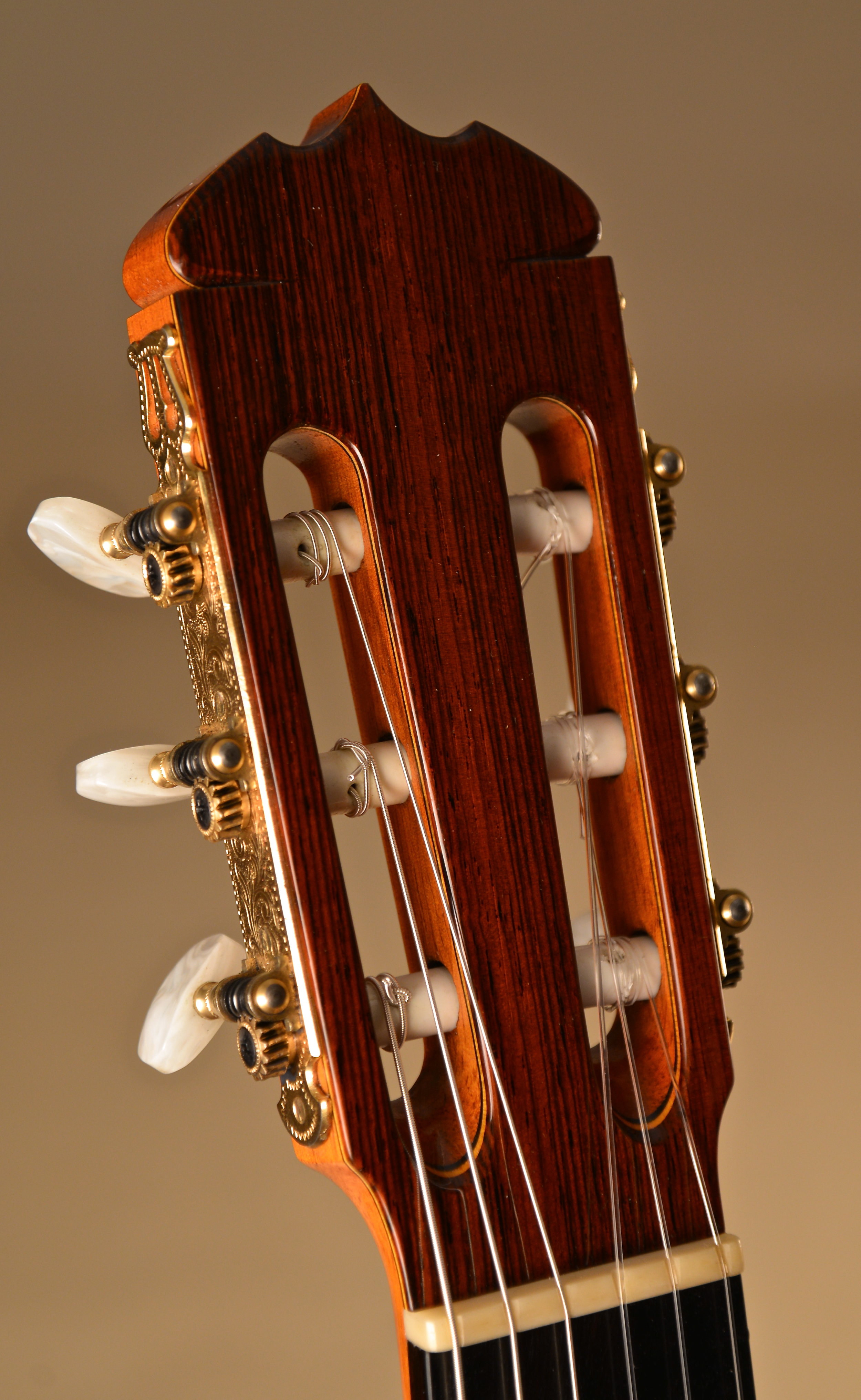1973 José Ramírez R-1043
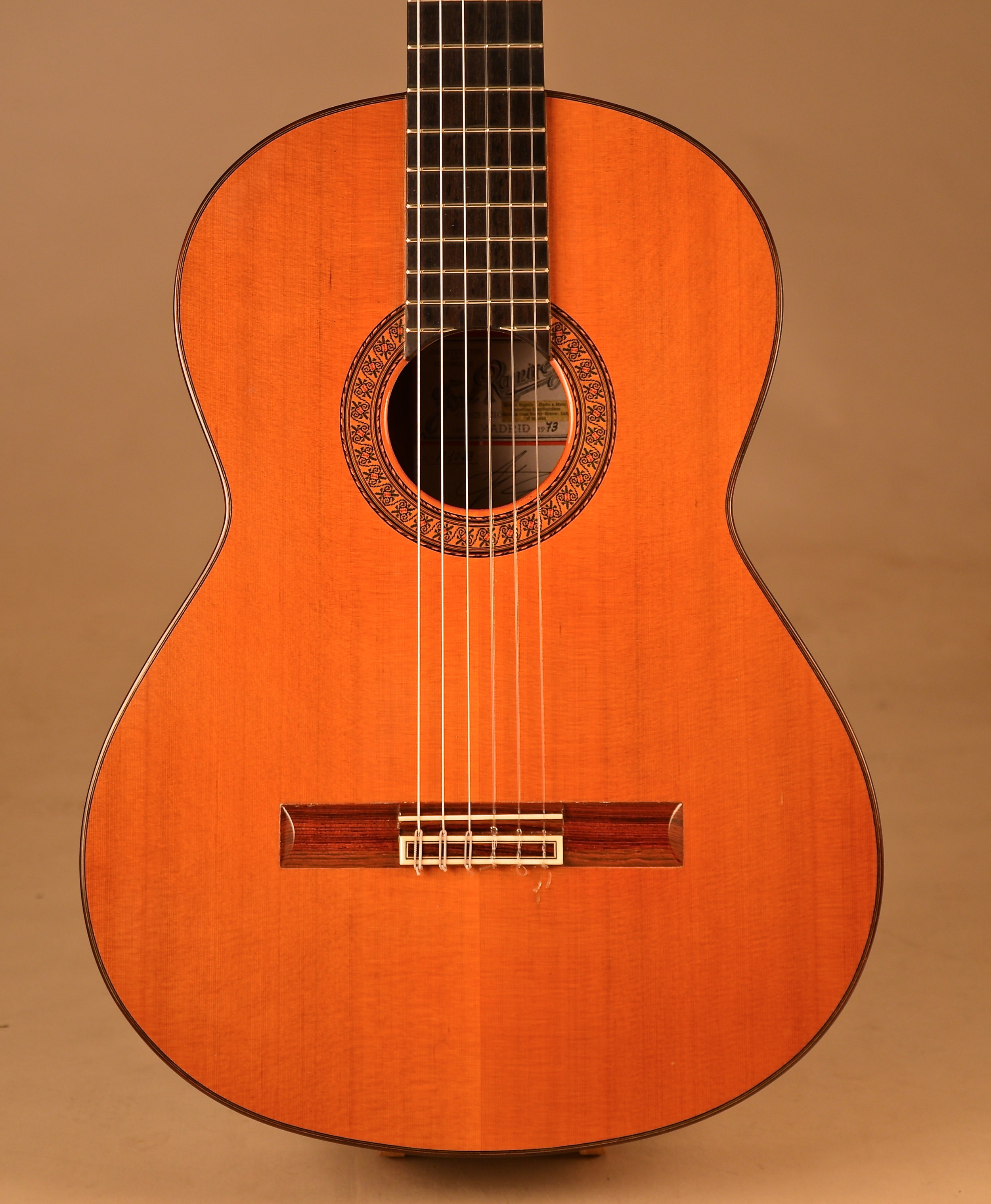

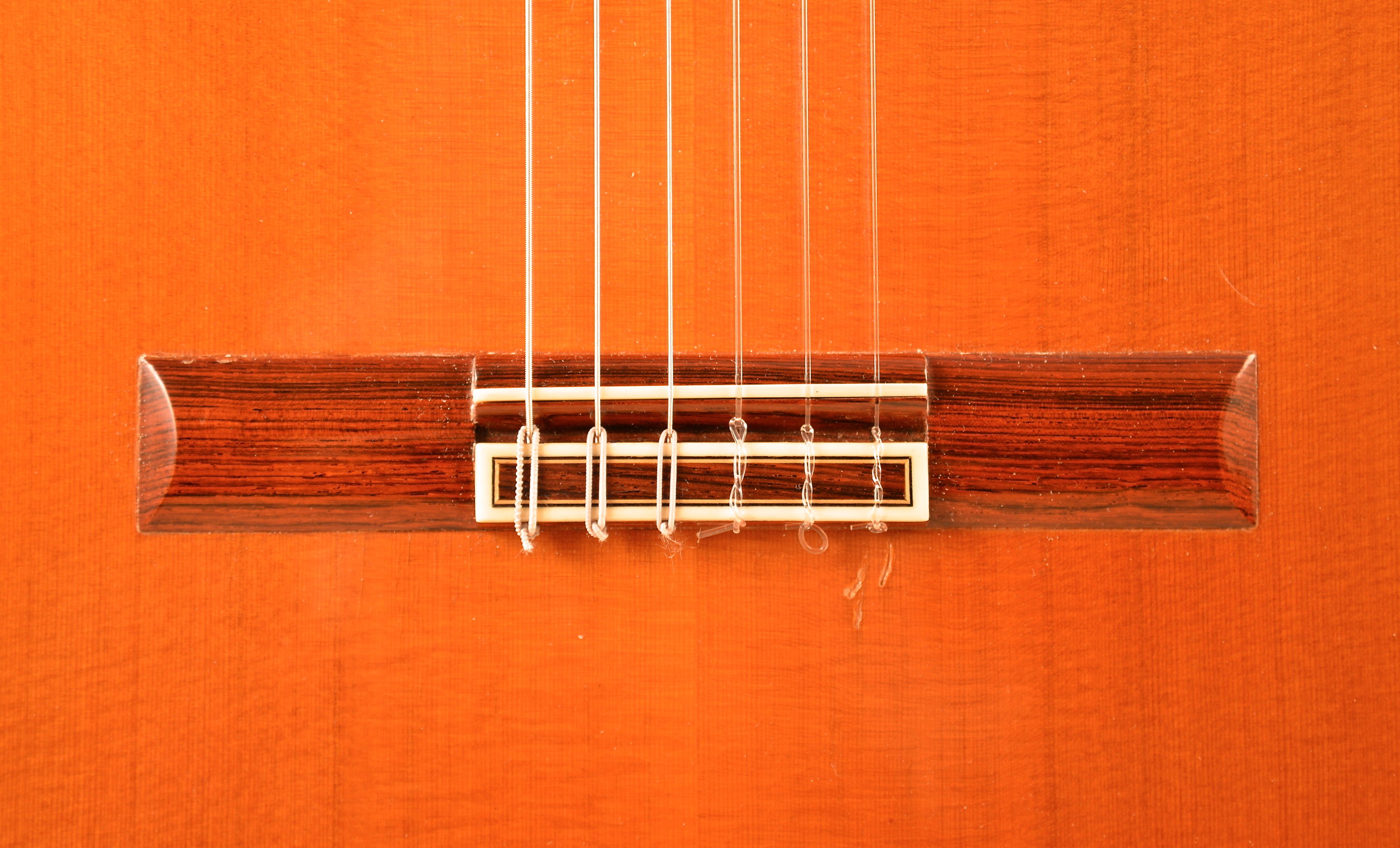
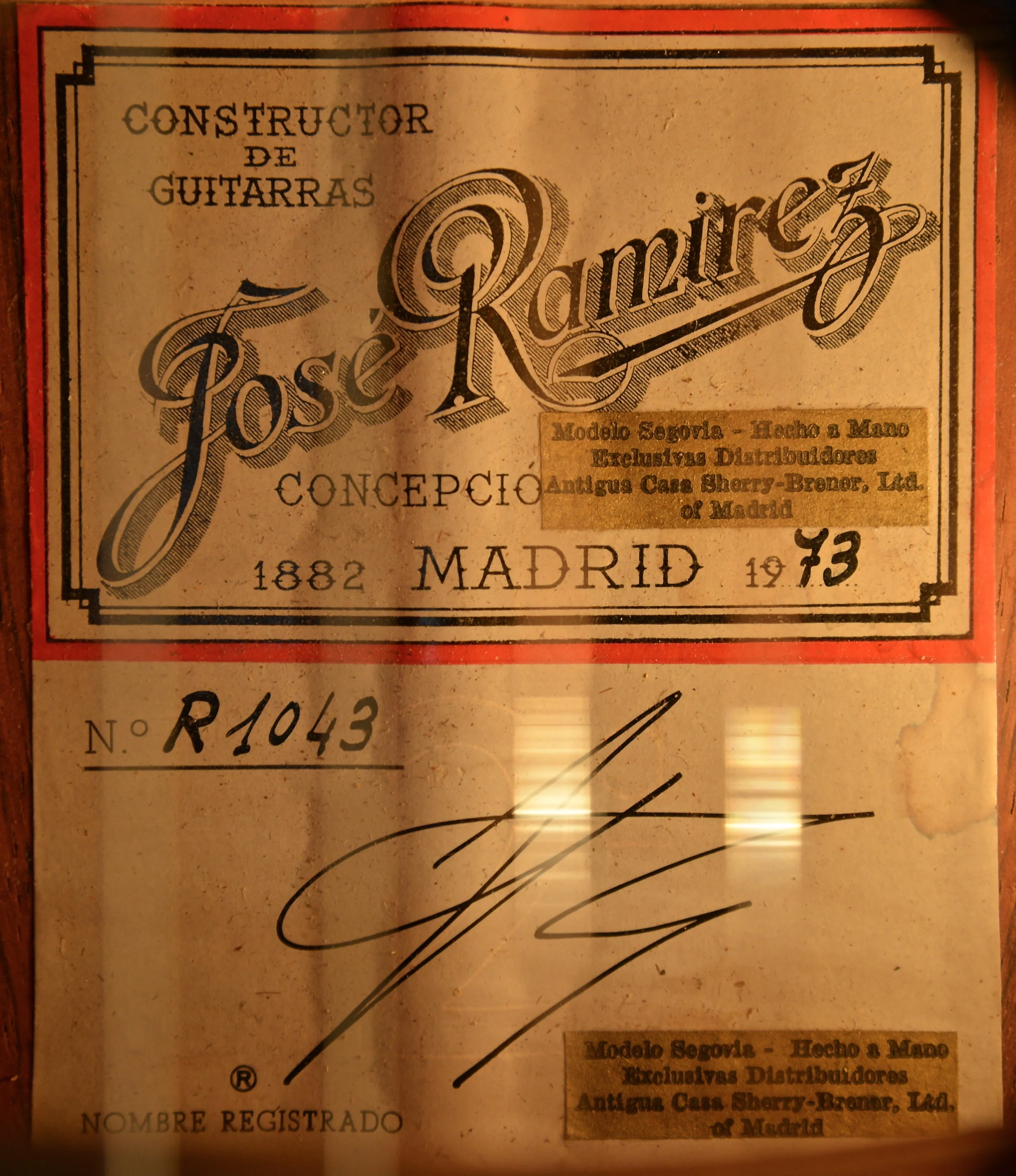
1973 José Ramírez III 2a (Spain) No. R-1043, 664 mm scale, 53 mm nut, strings are spaced 45 mm on centers between 1st and 6th, action at the 12th fret is 5 mm on the bass side, 3 mm on the treble side, there is still 1.5 mm of saddle projecting above the bridge on the bass side, there is still 1 mm of saddle projecting above the bridge. Cedar top, Brazilian rosewood sides and back, catalyzed urethane varnish, stamped Fustero tuning machines. Condition is good, there is one previously glued crack on the upper bout of the back with internal cleats which has no effect on the sound nor longevity of the instrument. These 2a (“segunda”) Ramírez instruments were virtually identical to the 1a models save for the wood and machine head selection, internally they are indistinguishable. Actions varied considerably with 1a and 2a instruments depending on which specific solera (work board) they were assembled on, which is one of the reason the initials or identity of the specific maker is pointless in establishing the quality and playability of the instrument, which is why we discourage focusing on this detail. Judge the instrument, not the label or stamp. This instrument is a great example of the early 70’s Ramírez model which was revolutionary at the time, having many non-traditional features such as laminated sides, sprayed finishes, and synthetic glue used to assemble them. The sound is huge with a bright penetrating treble and firm focused bass, very colorful, the embodiment of what some call the modern “Madrid School” of guitar making. Playing instruments such as this Segovia was able to project to the furthest seats of the largest concert halls during his world tours without amplification. Many players consider these older vintage Ramírez guitars to be much superior to those currently produced in Madrid, and the prices are certainly attractive compared to new models. $5,000
